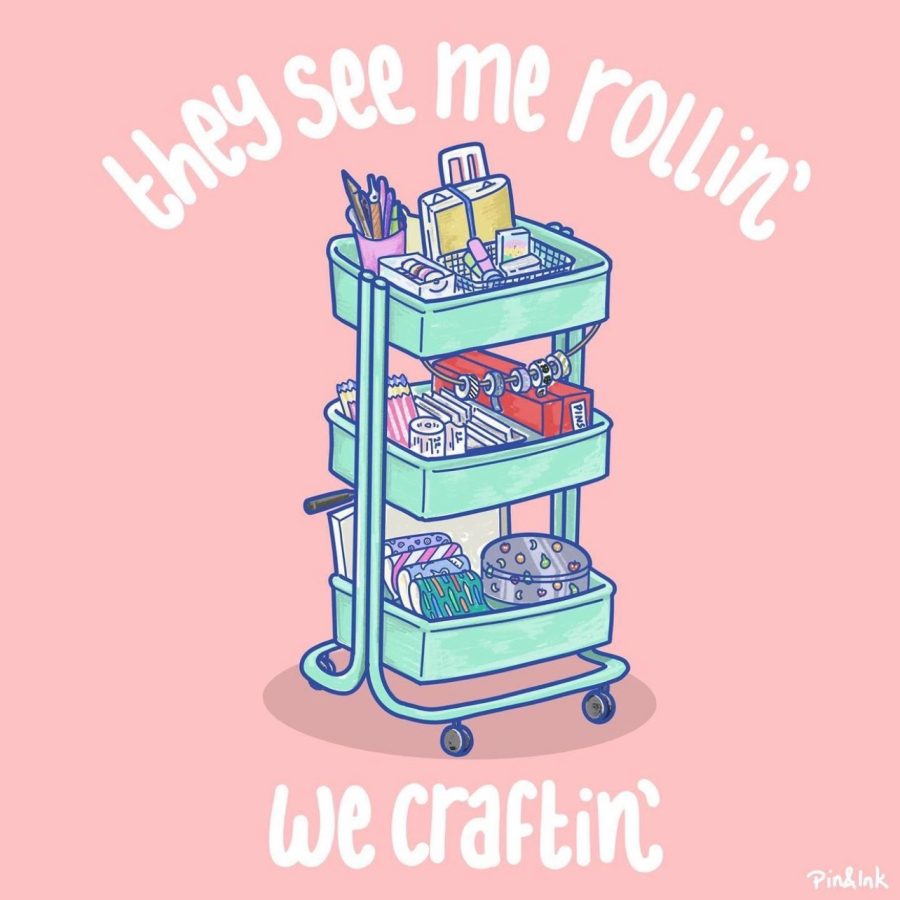Arts and crafts: Don’t make Michael’s ever run out of business
Forming simple hobbies, like arts and crafts, bring joy, color and spunk to the black and white lives of college students.
February 24, 2022
The key to making your classmate’s science project look severely lesser than is to splurge in the craft store, buying an umpteen number of stickers, decals and glitter. The girlies just love Michaels, JoAnn’s Fabrics and Hobby Lobby.
The list of crafts you can do is endless: scrapbooking, flower arrangements, pottery, paintings, drawings, textiles, papercraft, jewelry making, woodcraft and even fashion are keeping at-home craftsmanship alive.
The term “craft” denotes a skill, usually employed in branches of the decorative arts or in an associated artistic practice. A key feature of crafts is that they involve a high degree of “hands-on” work (hence the colloquial term “handicrafts”) rather than just skill with a machine.
Art and craft have always been valued in schools and hobby-enthusiasts. Per our new social culture and inventions, artists have been taken with exploring new tools and media both in traditional crafts and contemporary crafts. New techniques like scrapbooking, card making, macramé (fiber art), mixed media and decoupage (layering paper cutouts) are finally getting the recognition they deserve in the crafting world.
There are two types of crafts: decorative art and applied art. Decorative art includes ornamental and functional works in pottery, furniture, furnishings, interior design and architecture. It is used by art critics to separate the “fine arts” such as drawing, painting and sculpture. “Fine Arts” are created for aesthetic reasons, displayed in homes and in exhibitions. Applied art is making functional, everyday items beautiful. This art specializes in architecture, interior design, graphic design, fashion design and industrial or commercial design.
Regardless of the definitions, arts and crafts can be anything you want it to be, which is the beauty of the art world in general. We are all capable of becoming artisans.
How ironic that even the arts and crafts aficionados carry their own stereotypes. Kids usually love the whims of coloring on paper and on their bedroom walls, whilst the older artists love knitting, quilting and stitching.
Arts and crafts-based activities have been a core part of occupational therapy that emerged as a health field after World War I, in response to the needs of returned soldiers suffering from PTSD. This was as both diversional therapy, distracting the mind from pain and flashbacks, as well as skills-development to re-enter the workforce.
Crafting brings much needed relaxation to busy minds. Studies have shown reduced anxiety, enhanced confidence, as well as cognitive abilities such as strengthened memory and concentration when crafters put time and effort into a specific task.
Introverts, the sick or those suffering from social anxiety can channel their energy into the process of crafting, which draws the unwanted focus on themselves to something that incites joy instead of dwelling on the circumstances of their life and personality.
Arts and crafts of all scales will continue to show positive outcomes in mental health reforms. It just needs to reach a wider audience instead of just aiding child learning and being a pastime for the elderly.




